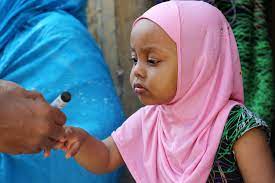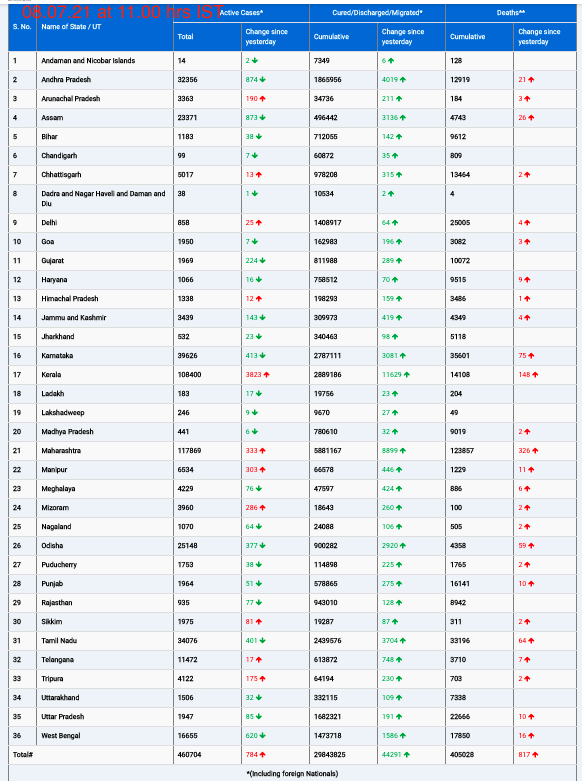
Situation at a glance
On 4 July 2023, the Ministry of Health of the United Republic of Tanzania notified WHO of the detection of circulating vaccine-derived poliovirus type 2 (cVDPV2) in the country. The virus was isolated from a case of acute flaccid paralysis (AFP) in the Rukwa region, southwestern Tanzania bordering Lake Tanganyika to the west and Zambia to the south. Gene sequencing of the isolated virus has indicated close linkage with the cVDPV2 circulating in South Kivu, Demographic Republic of the Congo (DRC).1
The public health authorities of the Ministry of Health are conducting further field investigations including strengthening the AFP surveillance for the detection of additional AFP cases and subnational level immunity gap analysis to identify potential un-or under-immunized populations and/or areas to guide public health response activities.
WHO assesses the overall risk at the national level to be high due to the sub-optimal surveillance performance in some districts, sub-optimal vaccination coverage resulting in low population immunity and the ongoing population movement across neighbouring countries.
Description of the situation
On 4 July 2023, the health authorities of the United Republic of Tanzania confirmed and notified WHO of the detection of circulating vaccine-derived poliovirus type 2 (cVDPV2) in the country. The case is a child under two years old and has received three doses of bOPV vaccine, one dose of IPV vaccine for routine immunization and two doses of bOPV during supplementary immunization activities (SIA) in 2022 with no documented travel history. The child was initially reported as a case of AFP from Rukwa region of southwestern Tanzania who experienced paralysis in late May 2023.
Two stool samples were collected from the case on 30 and 31 May 2023 respectively and were confirmed to be cVDPV2 on 30 June 2023. Gene sequencing results showed that the isolated virus has undergone 15 nucleotide changes and is closely related to the strain circulating in South Kivu, Demographic Republic of the Congo in 2023.1
Since 2022, Tanzania has been actively participating in a multi-country outbreak response across south-east Africa, in response to detection of different strains of poliovirus in the sub-region, including boosting immunity levels through mass vaccination campaigns and strengthening subnational surveillance capacity.
According to the WHO-UNICEF estimates of national immunization coverage, the oral polio vaccine third dose (OPV3) and the inactivated polio vaccine first dose (IPV1) was 88% in 2022 in Tanzania.
Epidemiology of Poliomyelitis
Polio is a highly infectious disease that largely affects children under five years of age, causing permanent paralysis (approximately 1 in 200 infections) or death (2-10% of those paralyzed).
The virus is transmitted from person-to-person, mainly through the fecal-oral route or, less frequently, by a common vehicle (e.g., contaminated water or food) and multiplies in the intestine, from where it can invade the nervous system and cause paralysis. The incubation period is usually 7-10 days but can range from 4-35 days. Up to 90% of those infected are either asymptomatic or experience mild symptoms and the disease usually goes unrecognized.
Vaccine-derived poliovirus is a well-documented strain of poliovirus mutated from the strain originally contained in OPV. OPV contains a live, weakened form of poliovirus that replicates in the intestine for a limited period, thereby developing immunity by building up antibodies. On rare occasions, when replicating in the gastrointestinal tract, OPV strains genetically change and may spread in communities that are not fully vaccinated against polio, especially in areas where there is poor hygiene, poor sanitation, or overcrowding. The lower the population’s immunity, the longer this virus survives and the more genetic changes it undergoes.
In very rare instances, the vaccine-derived virus can genetically change into a form that can cause paralysis as does the wild poliovirus – this is what is known as a vaccine-derived poliovirus (VDPV). The detection of VDPV in at least two different sources and at least two months apart, that are genetically linked, showing evidence of transmission in the community, is classified as ‘circulating’ vaccine-derived poliovirus type 2 (cVDPV2).
The last recorded case of indigenous wild poliovirus (WPV) in Tanzania was in 1996, and the cVPDV2 case in 2023 is the first case detected in the country.
Public health response
- A risk assessment is being conducted, led by the Ministry of Health and supported by Global Polio Eradication Initiative partners, along with a field investigation and planning of appropriate response.
- The capacity of the country’s AFP surveillance has been strengthened to detect additional AFP cases.
- Subnational immunity levels are being analysed to identify potential un-or under-immunized populations and/or areas.
WHO risk assessment
WHO assesses the overall risk at the national level to be high due to the sub-optimal AFP surveillance performance in some districts, the sub-optimal vaccination coverage resulting in low population immunity and more susceptible children, and the ongoing population movement across neighbouring countries.
WHO considers this event to be of high risk of international spread and/or emergence of cVDPV2 of this strain across the region, particularly across other areas of central and south-east Africa, due to the low population immunity and inadequate routine immunization levels in some areas, and large-scale population movements. In all instances, the continued spread of existing outbreaks as well as the emergence of new outbreaks of cVDPV2 point to gaps in routine immunization coverage and inadequate outbreak response vaccination.
While new WHO and UNICEF data show promising signs of immunization services rebounding in some countries, coverage still falls short of pre-pandemic levels putting children at risk from disease outbreaks, particularly in low-income countries. In response to these latest published data, the members of the Immunization Agenda 2030 Partnership Council called for further strengthened efforts (Immunization Agenda 2030) for immunization recovery.
WHO advice
It is important that all countries, in particular those with frequent travel and contacts with polio-affected countries and areas, strengthen surveillance for AFP cases and commence planned expansion of environmental surveillance to rapidly detect any new virus importation and to facilitate a rapid response. Countries, territories and areas should also maintain uniformly high routine immunization coverage at the district level to minimize the consequences of any new virus introduction.
WHO’s International Travel and Health recommends that all travelers to polio-affected areas be fully vaccinated against polio. Residents (and visitors for more than 4 weeks) from infected areas should receive an additional dose of OPV or IPV within 4 weeks to 12 months of travel.
As per the advice of an Emergency Committee convened under the International Health Regulations (2005), the risk of international spread of poliovirus remains a Public Health Emergency of International Concern (PHEIC). Countries affected by poliovirus transmission are subject to Temporary Recommendations. To comply with the Temporary Recommendations issued under the PHEIC, any country infected by poliovirus should declare the outbreak as a national public health emergency, ensure the vaccination of residents and long-term visitors and restrict at the point of departure travel of individuals, who have not been vaccinated or cannot prove the vaccination status.
The latest epidemiological information on cVDPVs is updated on a weekly basis.
Further information
- Global Polio Eradication Initiative: http://polioeradication.org/
- Poliomyelitis Fact sheets: https://www.who.int/topics/poliomyelitis/en/
- WHO immunization dashboard: https://immunizationdata.who.int/
- GPEI Public health emergency status: http://polioeradication.org/polio-today/polio-now/public-health-emergency-status/
- International travel and health: https://www.who.int/ith/en/
- Vaccine-derived polioviruses: http://polioeradication.org/polio-today/polio-prevention/the-virus/vaccine-derived-polio-viruses/
- Statement of the thirty-fifth Polio IHR Emergency Committee: https://www.who.int/news/item/12-05-2023-statement-of-the-thirty-fifth-polio-ihr-emergency-committee
- Immunization Agenda 2030: http://www.immunizationagenda2030.org/images/documents/final2IAPC17_July_WEUNIC_STATEMENT.pdf
1GPEI Statement on cVDPV2 detections in Burundi and Democratic Republic of the Congo: https://polioeradication.org/news-post/gpei-statement-on-cvdpv2-detections-in-burundi-and-democratic-republic-of-the-congo/
Citable reference: World Health Organization (28 July 2023). Disease Outbreak News; Circulating vaccine-derived poliovirus type 2 (cVDPV2) in United Republic of Tanzania. Available at: https://www.who.int/emergencies/disease-outbreak-news/item/2023-DON480









